From basic farm animals to exotic wildlife, thousands of species eat grass. It is one of the most common food sources and provides them with many nutritious vitamins and minerals. What animals eat grass?
Animals that eat grass include llamas, pandas, monkeys, turtles, cutworms, geese, and skinks. For some animals, grass is just a supplement. For other animals, grass makes up a majority of their daily diet.
Here are the specifics for each animal type.
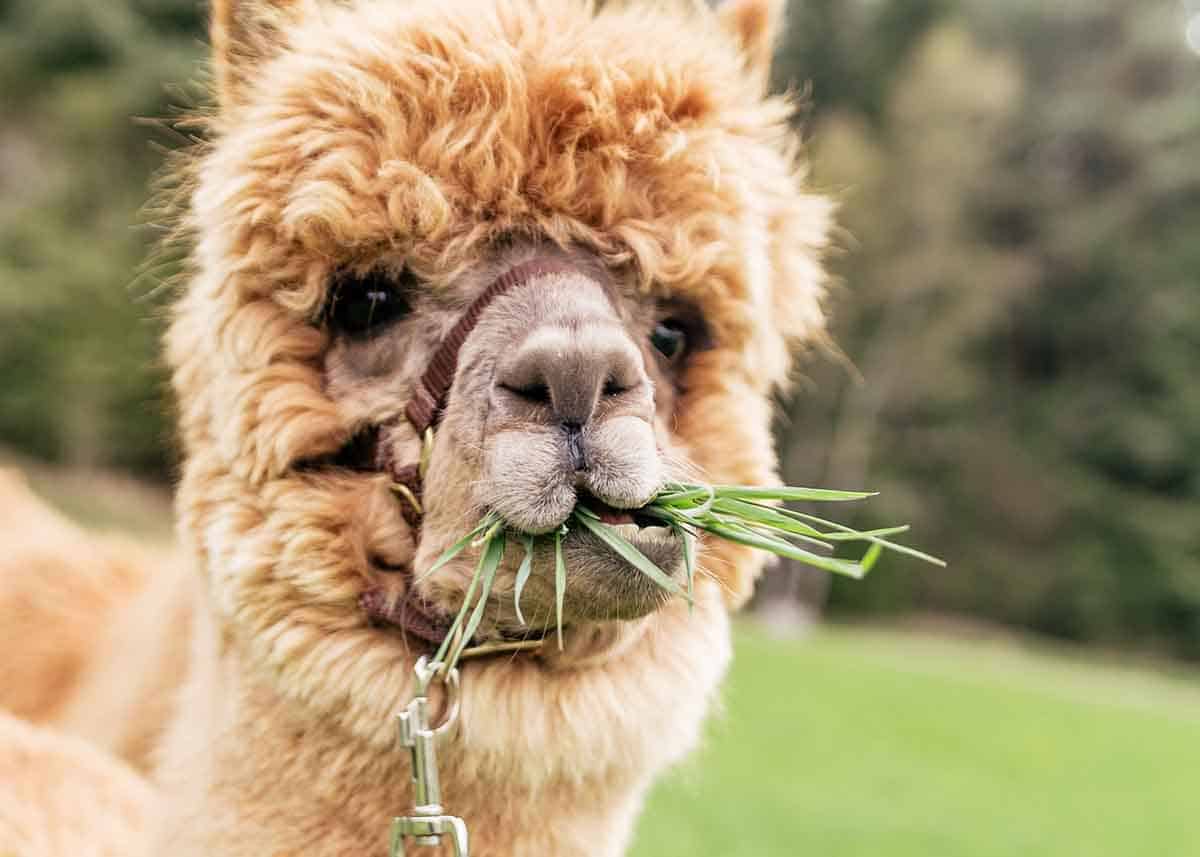
Table of Contents
What Animals Eat Grass?
To primarily eat grass, these creatures need strong digestive systems capable of breaking down the tough fibers and absorbing the nutrients it offers.
Human stomachs do not have this capability, making it all the more interesting to learn about creatures that do.
12 Land Mammals That Eat Grass
The most common creature to eat grass is mammals, meaning warm-blooded vertebrae with hair or fur. This can cover anything from dogs and cats to rodents and elephants.
Most people know that basic farm animals eat grass, but what other mammals eat grass?
1. Elephants
Elephants are the largest land mammals, weighing up to 7 tons. And grass can make up to 60% of their diet.
Tall grass found in wide open plains is generally the main course for these mammals since it is the easiest to reach. They also feed on plants, fruit, and even tree bark.
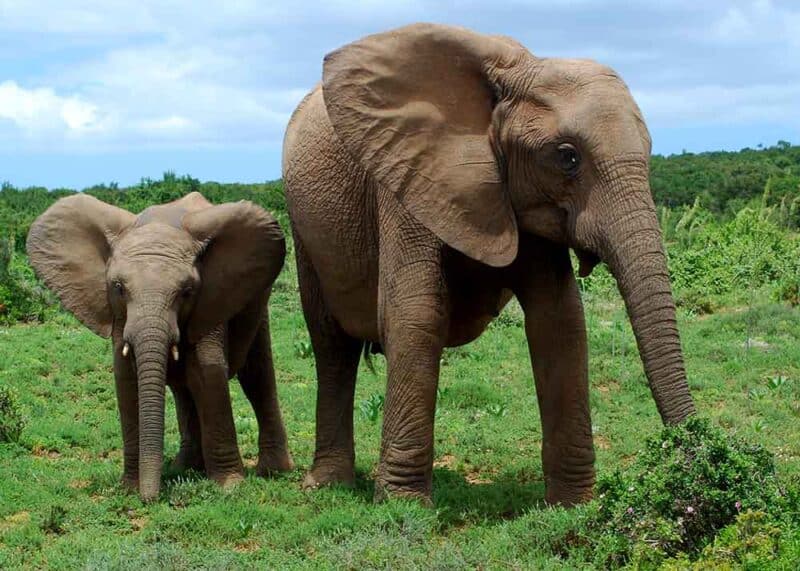
2. Hippopotamus
Known for having the largest mouth of all land mammals, it may come as a surprise to some that hippos are herbivores.
They consume up to 80 pounds of grass daily, feeding primarily at night. They may need to travel long distances to consume the necessary volume of food.
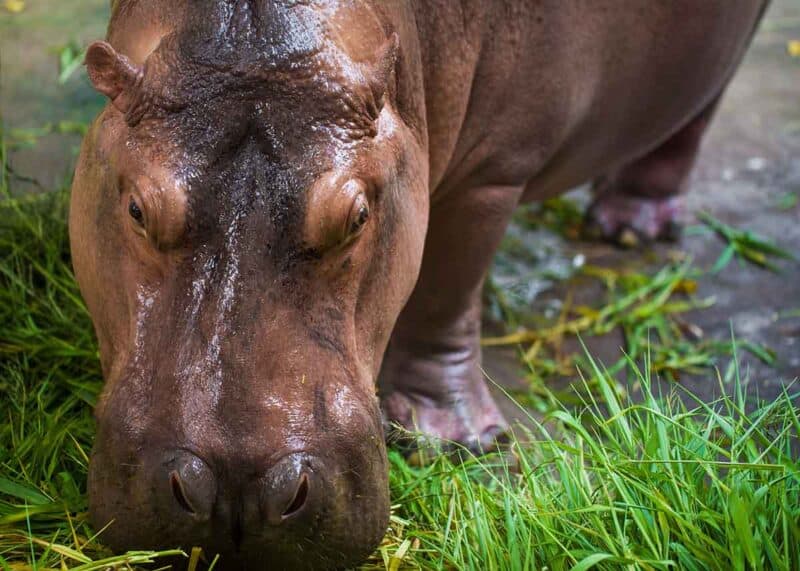
3. Rhinoceros
Rhinos are among the world’s largest land mammals, weighing up to 8,000 pounds. Grass makes up a large portion of their diet, as well as other plants, fruit, and trees.
White rhinos are known for eating shorter grass, whereas other species prefer longer grass as well as leaves and sweet fruit.
4. Camels
The famous hump-wielding mammal eats a lot of grass and can drink up to 53 gallons of water in three minutes. However, the grass they consume is typically dried, mainly from the desert.
While they are primarily herbivores, they can have omnivorous tendencies when necessary. They will happily graze on shrubs, twigs, leaves, and anything else they can find.
5. Llamas
Llamas are foragers and require significant pastures for grazing. Llamas eas 1 – 1.3% of their body weight in grass daily. This means they’ll eat between 2.5 to 6 pounds of grass daily (with body weights ranging from 250 to 450 lbs).
Alpacas also eat grass and are closely related to llamas. Here’s how to tell them apart: Alpaca vs Llama.
The feature image at the beginning of the post is an alpaca, and the following image is a llama.
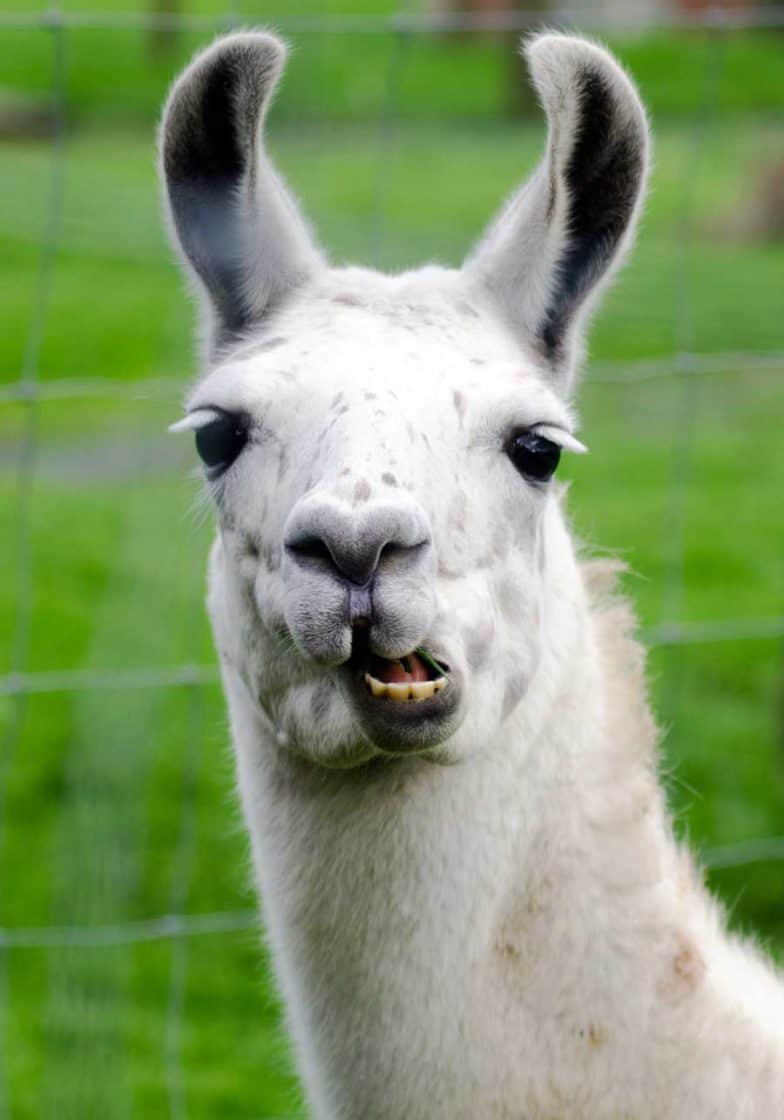
6. Quokkas
Quokkas are herbivores that eat grasses, leaves, shrubs, and plants. One study has suggested that their favorite food is Guichenotia ledifolia, a type of white-purple flower.

7. Pandas
When you think of bears, you might think of carnivores, but this is not true for these fuzzy creatures. Grass, bamboo, and fruit comprise most of this omnivore’s diet.
Depending on the season and food availability, giant pandas may occasionally eat insects or small mammals but strongly prefer vegetation. The other panda species is the red panda, one of the most colorful animals on the planet.
Here’s a detailed guide about what all bears eat.
8. Kangaroos
The national animal of Australia and the world’s largest marsupial loves to eat grass. They never stay in one place for long, grazing in short increments and then moving on.
An interesting thing about kangaroos is their teeth, which, unlike other grazing animals, tend to get worn down from gnawing on grass all day. However, once their teeth have been worn down, they will fall out and be replaced by a new set. This can happen several times throughout their life.
Here’s an all-species guide to what kangaroos eat.
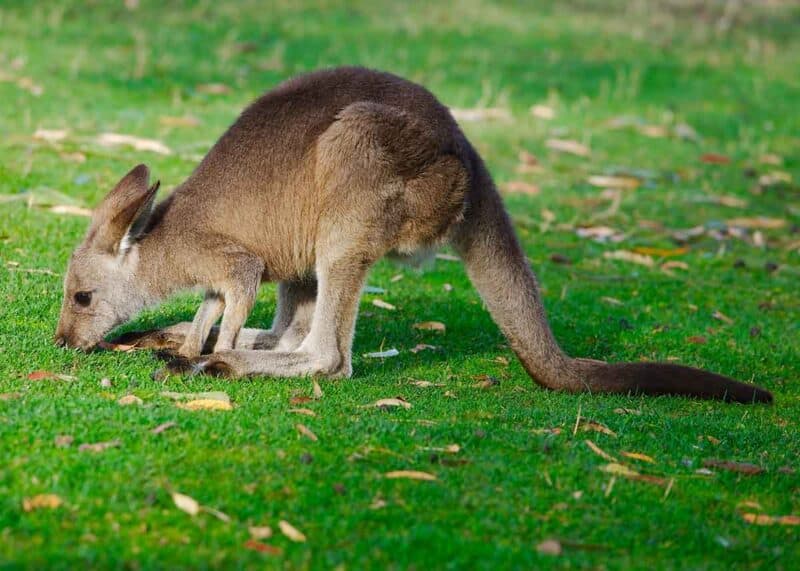
9. Zebras
Like their cousin, the horse, a zebra’s diet comprises 90% grass. However, unlike horses which prefer to graze on short grass, zebras love tall, green grass, along with red oat grass.
They will also snack on shrubs, leaves, and other green plants. These grasses are generally low in protein and high in fiber.
10. Bison
Like cows, bison have a four-chambered stomach designed to break down the plant material that may otherwise be difficult to digest.
Bison are foragers, and while a large part of their diet comprises prairie grass, they will also eat trees, shrubs, seeds, and even tree bark in the winter.
Here’s how to tell buffalo from bison.
11. Wildebeests
Yet another mammal with a diet of 90% grass, wildebeests are known for their migration patterns throughout the year.
They live in large herds that can reach numbers by the thousands—that’s a lot of grass. Because of this, it can be difficult for farmers to feed their cattle when competing for pastures. Wildebeests primarily feed on short, sweet grass, as well as succulents.
12. Monkeys
Monkeys eat more than just bananas. Monkeys are omnivores, though their diet consists primarily of plants, fruit, and seeds. The Geladas, specifically, are the only primates who mostly eat grass.
Domestically, many animals eat grass. Cows, horses, goats, and donkeys eat grass (or hay) daily. Dogs and cats will also eat grass, given the chance.
4 Birds That Eat Grass
Birds are foragers and will eat seeds, insects, and fruit, among other things. While it is more common for birds to eat grass seed, a few birds will eat grass leaves.
1. Ducks
Ducks can consume almost any plant-based food, and grass is no exception. Grass is a large part of a duck’s diet in the wild, and domesticated ducks also enjoy it.
They are not picky about what type of grass they eat as long as it is soft enough for them to break with their bills.
Learn more about the beautiful Mandarin duck.
2. Geese
Grass is an all-time favorite for these omnivorous waterfowl, and they consume large amounts of it. Even clipped grass will be quickly gobbled up by a goose. They also eat insects and small fish.
And there isn’t much grass that a good can’t bite off. Their beak and tongue are well-equipped with geese teeth – tomium serrations for ripping vegetation.
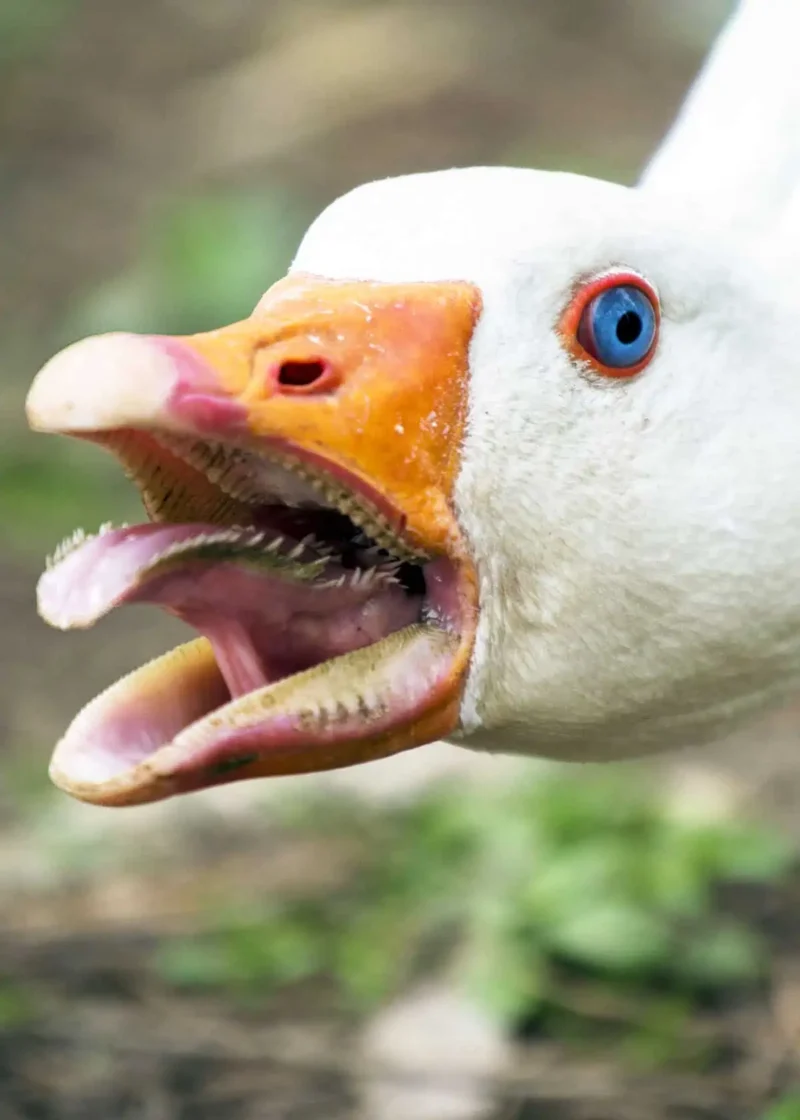
3. Ostriches
Known for being the fastest animal on two legs, the ostrich is also the largest bird in the world. They are omnivorous, feeding on various plants, including grass.
Roughly half of their diet comprises vegetation, and they are not picky about what they eat.
4. Swans
This majestic waterfowl is not picky about the vegetation they forage upon and thus consume large amounts of grass.
Short-trimmed grass is ideal for these scavengers, but they will also eat water vegetation such as pondweed and muskgrass. Swans are primarily herbivores but can occasionally eat insects and small fish when necessary.
Swans are well-known as a bird that mates for life.
6 Reptiles That Eat Grass
It is a common misconception that most reptiles are carnivorous. Many, if not most, reptiles are omnivores, eating plants, fruits, and vegetables to maintain a healthy diet.
1. Turtles
There are over 300 species of turtle, and many of them eat grass, including sea turtles, which feed on seagrass.
Freshwater turtles often graze on grass. They also eat dandelions, buffalo grass, algae, and other vegetation.
Learn more about the unusual mata mata turtle.
2. Tortoises
Commonly mistaken for their cousin, the turtle, tortoises are terrestrial reptiles that are primarily herbivores.
Tortoises feed on grass, weeds, and small shrubs in the wild. In captivity, they will eat whatever is provided, including grass.
They also love fruit, such as berries or bananas, but these should be fed in moderation.

When I visited the Galapagos, I saw giant Galapagos tortoises feed on grass, papaya, and even cactus stalks.
3. Iguanas
Green iguanas are plentiful from Mexico to South America. These cool-looking creatures are omnivores. And while grass isn’t a required part of their diet, they regularly eat it.
They need much more than grass and also feed on large leaf plants, flowers, and fruit.
4. Chuckwallas
The dessert-dwelling cousin of the iguana, the chuckwalla is another omnivorous reptile that feeds mainly on plants and flowers.
Their diet includes grass, especially for chuckwallas in more vegetative habitats. In the desert, they largely consume creosote bush leaves and eat cacti. They have also been know to eat an occasional insect.
5. Bearded Dragons
These adorable desert reptiles are omnivores that primarily feed on insects, with about 20% of their diet made up of plant matter.
In the desert, they can not be too picky about what they eat and will feed on grass, weeds, plants, and anything they can find. A hungry bearded dragon will have no problem eating grass if it is put in front of them.
6. Monkey Tailed Skinks
These prehensile-tailed skinks are the only species of skinks to be primarily herbivores and only turn to eat insects when food is scarce. Instead, they feed mainly on flowers, leaves, grass shoots, fruit, and other vegetation.
Learn more about the blue-tongued skink.
6 Insects That Eat Grass
The list of insects that eat grass is surprisingly long, and many are considered pests. Here are a few of the most common insects that consume grass.
1. Grasshoppers
Grasshoppers are among some of the most ancient herbivorous insects and love to eat grass.
They also chew on plant stems and dried grass, and when food is scarce, will eat moss and fungi.
2. Billbugs
These pesky weevils are a common pest in many parts of the US, known for eating grass stems and destroying lawns. As these bugs mature, they generally move on to eating larger plants.
3. Japanese Beetles
The larvae of the Japanese beetle feed on grass, grass roots, and seeds. The most damage is done to lawns between May and July while they are young.
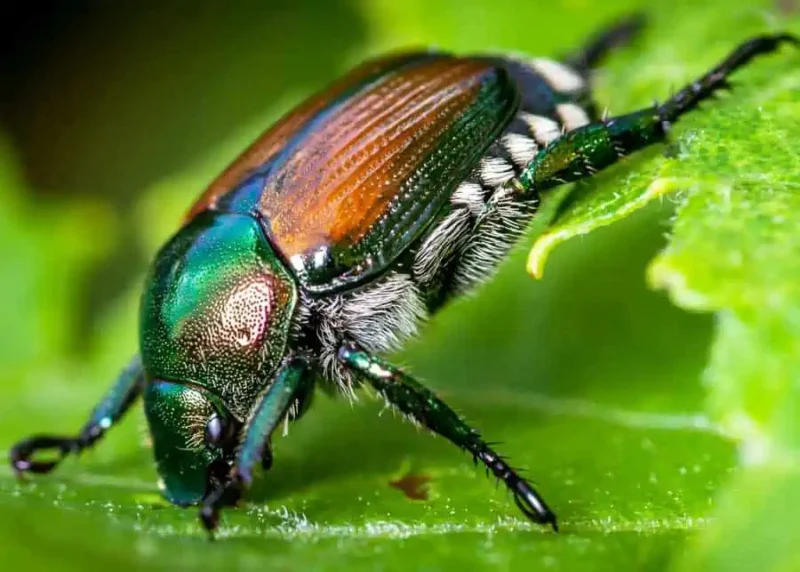
4. Chinch Bugs
These tiny bugs can do a large amount of damage to turfy grass, crops, and lawns in the area.
They not only feed on grass, but they also inject it with a toxin that kills the grass and prevents it from regrowing.
5. Cutworms
These large caterpillars are moth larvae and love to feed on freshly cut grass. However, they will eat almost any vegetation and can be terrible garden pests.
We’ve had significant problems with cutworms in our vegetable garden over the years. It seems that they favor young, tender plants. Once a plant gets established, they are usually safe.
6. Sod Webworms
Sod webworms are a group of over 20 species that feed on turf grasses in the US. The larvae feed at night on the stem and root of the grass.
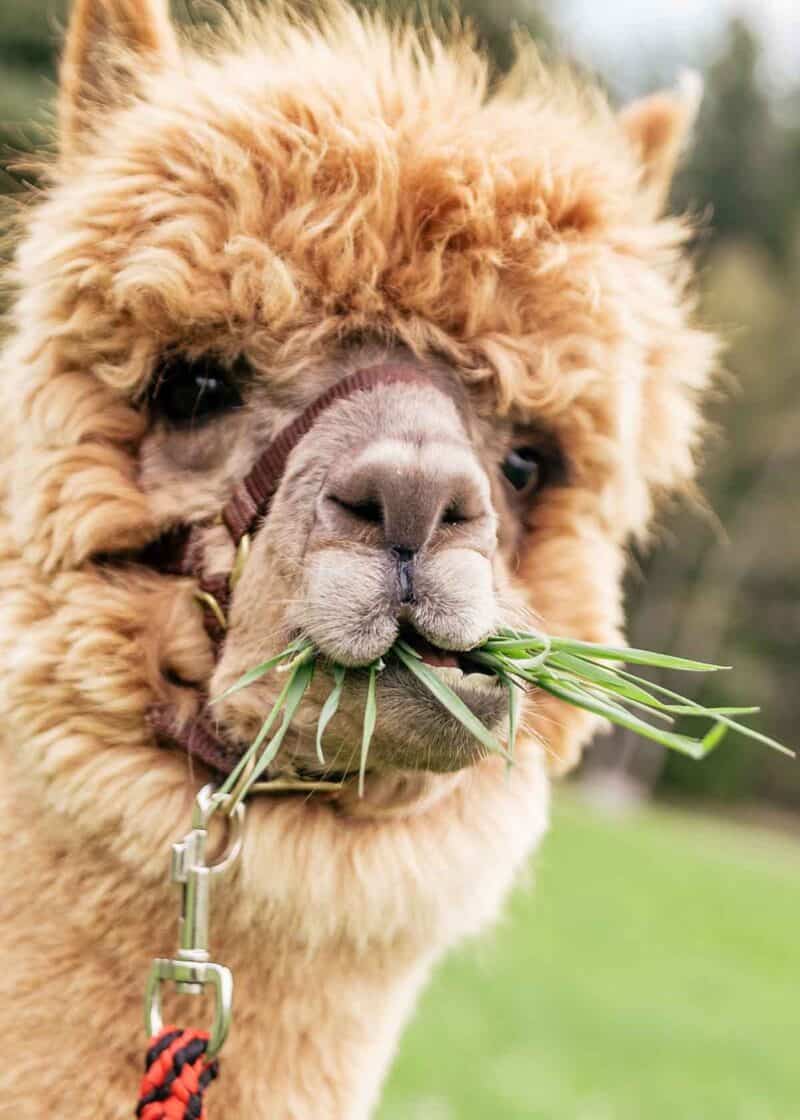
Digestion in Grass Eating Heribvores
Final Thoughts
While we may associate certain animals with eating grass, many can surprise us. The above-listed animals are just examples of that and a reminder of how fun and insightful exploring various aspects of the animal kingdom can be.
Did I miss one of your favorite animals that eat grass? Let me know in the comments!
Drew Haines is an animal enthusiast and travel writer. She loves to share her passion through her writing.
She graduated high school at sixteen and started her own business, Everywhere Wild Media. And she runs Everywhere Wild and JustBirding. She also guest blogs on Storyteller.Travel
She lived in Ecuador for 6 years and explored the Galapagos Islands. Currently based in N.S., Canada.
